
3.1. Introduction to Computers - sidebar

Motherboard [src]
Some Older External Ports
800.jpg)
Typical integrated motherboard ports (see top view above) — public domain image
| 1. & 2. PS/2 (mouse, keyboard) | 3. RJ-45 Ethernet | 4. USB | 5. Serial (terminal, modem) |
| 6. parallel (printer) | 7. VGA monitor | 8. DA-15 (old networking) | 9. audio |
PS/2
PS/2 ports were for connecting peripherals such as your mouse (1 above) and keyboard (2 above) to the computer, but are now outdated. PS/2 based mice and keyboards have now been replaced by USB ports as the popular standard. This trend for USB over PS/2 started in circa 2004.
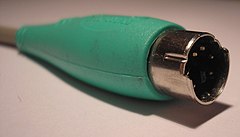
PS/2 connector
By Piotrek91 (Camera Olympus Camedia 480Z) [CC-BY-SA-2.5], via Wikimedia Commons
Serial
An outdated piece of technology, serial ports (5 above) were most often used to connect the mouse and keyboard. By circa 2000, most personal computers stopped relying on serial ports and were replaced by PS/2 and/or USB ports.
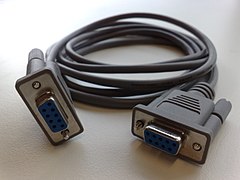
Serial connector
By David Marsh (Flickr: Serial Cable) [CC-BY-2.0], via Wikimedia Commons
Parallel
Parallel ports (6 above) are used to connect other peripherals such as joysticks, and more commonly, printers. Similar to the serial port, this technology is slowly being phased out in favor of USB. Parallel ports can still be found in many motherboards today.
.jpg)
Parallel printer cable — public domain image
VGA
A VGA (7 above), or Video Graphics Array, connector is used to connect a monitor or other video equipment. The same connector is sometimes used for high definition television and is sometimes called an RGB connector. The modern equivalent is USB and the High-Definition Multimedia Interface (HDMI).
DA-15
The DA-15 port shown (8 above) has been used for network connectivity and for video output.
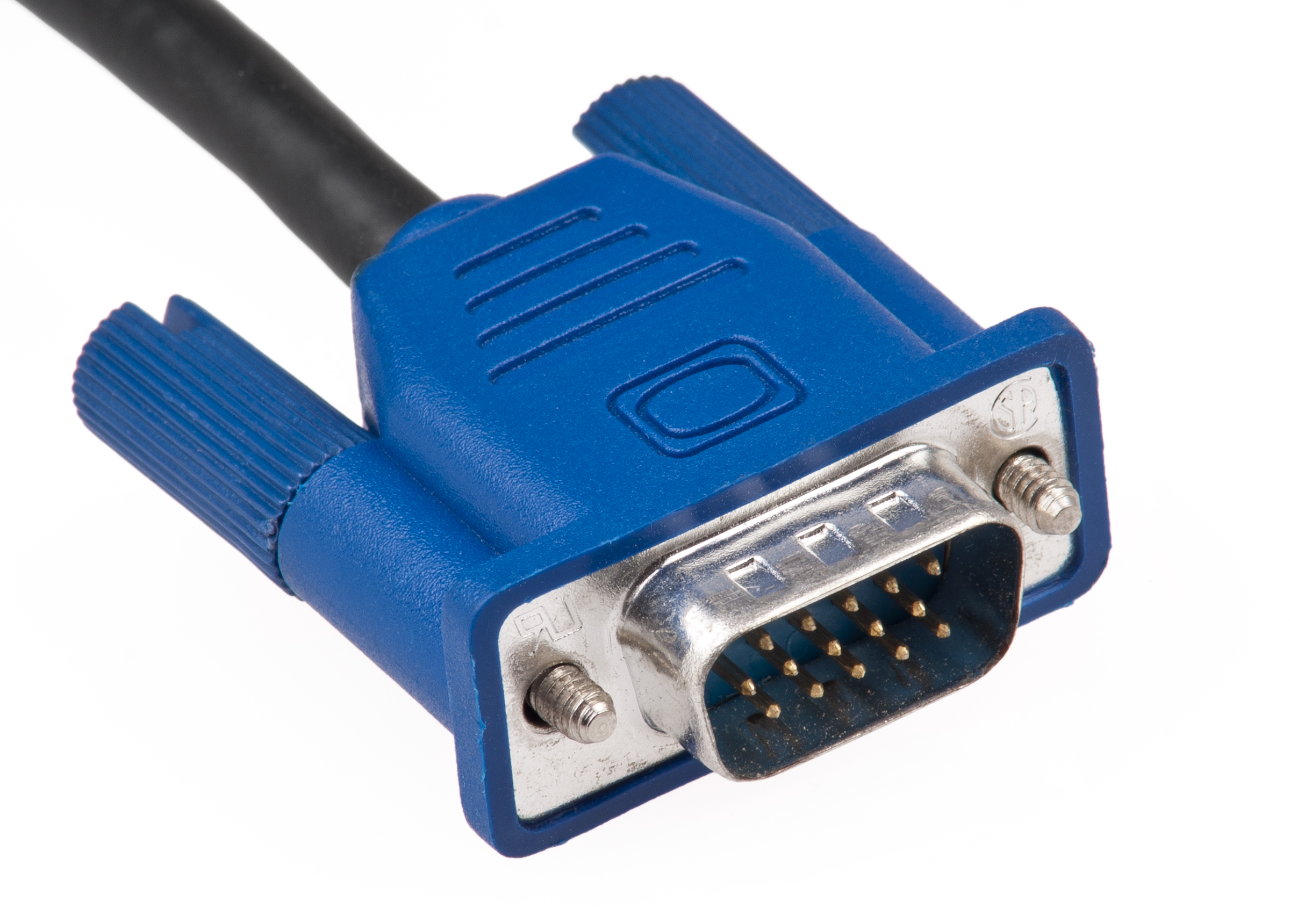
VGA cable for monitor — public domain image
Audio
The audio input and stereo output ports (9 above) connect to external speakers, a microphone, head sets, and possibly a game. The external ports are color coded by industry standard.

Audio ports — public domain image
Firewire
Technically known as the IEEE 1394 interface, but dubbed by Apple as Firewire (not shown above), this connection medium hoped to surpass USB in terms of speed and popularity. While it did outperform USB v2 in speed tests, uptake was very limited due to the existing widespread use of USB.
Firewire is the standard for high definition audio and video transfer and may be found on many digital camcorders.
Also known by the brand names i.LINK and Lynx.
eSATA [src]
SATA (Serial Advanced Technology Attachment) is a computer bus interface for connecting to mass storage devices such as hard disk drives and optical drives inside the system box. eSATA is an external port for drives.
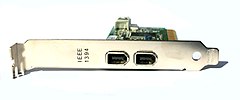
Firewire PCI Expansion Card
Jonathan Zander [GFDL, CC-BY-SA-3.0 or CC-BY-SA-2.5], via Wikimedia Commons
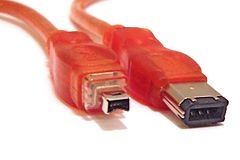
Firewire cables: 4 & 6 circuit
By Mikkel Paulson (Own work) [see page for license], via Wikimedia Commons

eSata Cable
By Smial at de.wikipedia [FAL, GFDL 1.2 or CC-BY-SA-2.0-de], from Wikimedia Commons

eSata Port — By Declan Jewell from Stevenston, Scotland (Sky HD Box) [CC-BY-2.0], via Wikimedia Commons
 #214 eSATA v. USB3.0 & Firewire
#214 eSATA v. USB3.0 & Firewire
SCSI
Pronounced "scuzzy", SCSI (not shown above) was used primarily as a connection interface for tape drives and hard disk drives. SCSI has been superseded in favor of newer and cheaper technologies such as USB and Firewire in the home market.
SCSI provides a high-speed (up to 5 Gbps) bus interface that allows up to 8 or 16 devices to be attached. It is still used for high-end workstations and servers.
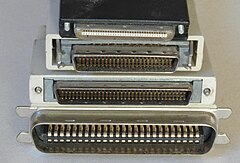
SCSI connectors
By Shieldforyoureyes Dave Fischer (Own work) [CC-BY-SA-3.0 or GFDL], via Wikimedia Commons
ExpressCard
The ExpressCard and slot (not shown above) is used primarily on laptop computers. It replaces the older PC Card (also called PCMCIA) shown at right. The ExpressCard comes in two sizes, although the ExpressCard/34 may be used in an ExpressCard/54 slot.
Hardware that may be plugged into a computer via an ExpressCard includes connect cards, FireWire 800 (1394B), USB 3.0, 1Gb/sec Ethernet, Serial ATA external stick drives, solid-state drives, external enclosures for desktop size PCI Express graphics cards, wireless network interface cards, TV tuner cards, common access card (CAC) readers, and sound cards.[src]
Other card slots may also be available, such a PC cards, smart cards, and secure digital cards
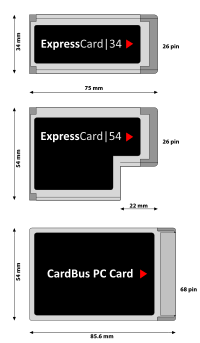
Comparison of Express Card and PC card
© 2006 Henrik Wannheden
